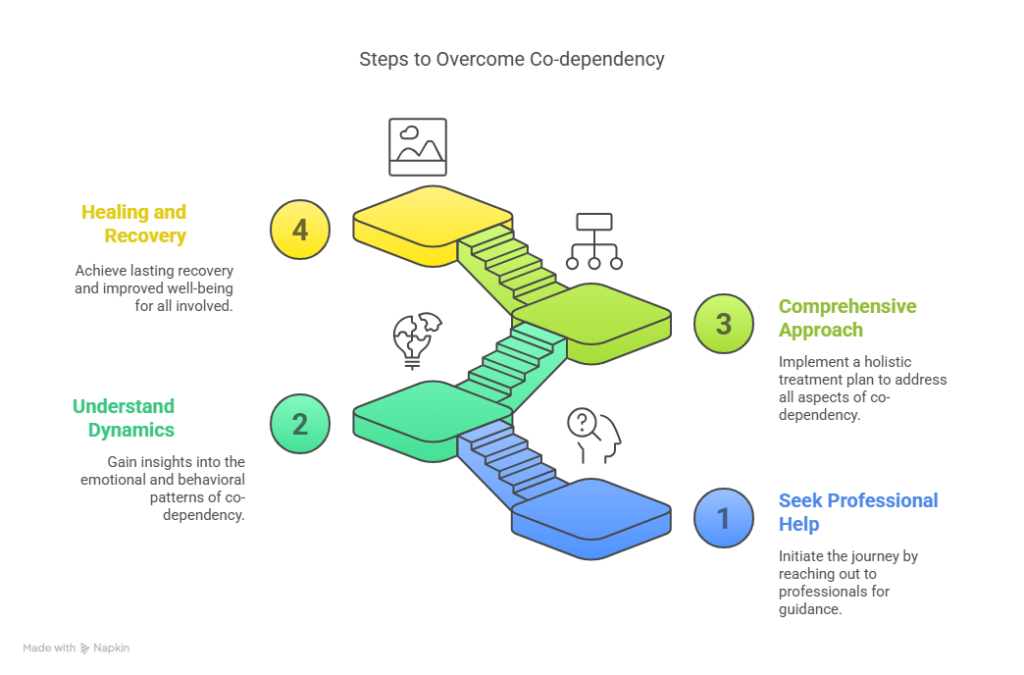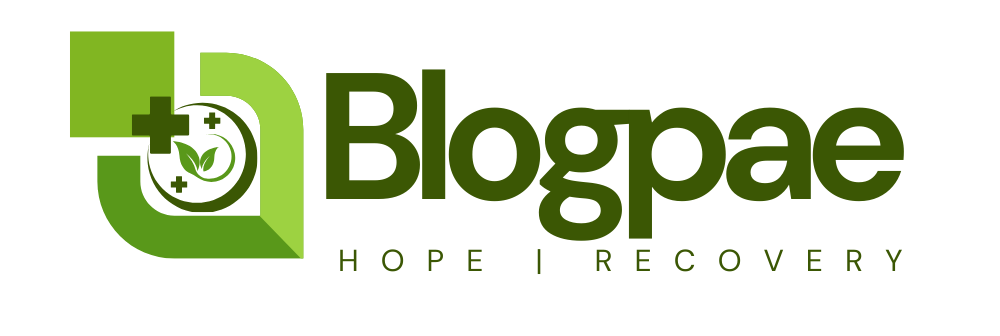Recovery from fentanyl addiction is a complex process that involves not just the individual struggling with substance use but also those around them.
Co-dependency can often hinder the recovery process, making it crucial to address these dynamics to achieve a successful recovery.

When individuals are caught up in co-dependent relationships, it can be challenging for them to focus on their recovery. By understanding and breaking these patterns, individuals can better support their loved ones and foster a healthier environment for recovery.
Key Takeaways
- Co-dependency can significantly impact the recovery process.
- Addressing co-dependency is crucial for successful recovery.
- Breaking co-dependent patterns can lead to a healthier recovery environment.
- Support from loved ones is vital in the recovery process.
- Understanding co-dependency dynamics is key to overcoming them.
The Reality of Co-Dependency in Addiction
Co-dependency in addiction is a complex issue that affects not only the individual struggling with substance abuse but also their loved ones. It involves a pattern of behavior where family members or friends enable or support the addict’s destructive habits, often unintentionally.
“Enabling behaviors can stem from a desire to help, but they ultimately hinder the recovery process,” as noted by experts in addiction treatment. Recognizing co-dependency is the first step towards healing.
Defining Co-Dependency in the Context of Substance Abuse
Co-dependency in the context of substance abuse refers to a relationship dynamic where one person enables or supports another’s addiction. This can manifest through various behaviors, such as making excuses, providing financial support, or covering up for the addict’s actions.
Co-dependent individuals often prioritize the addict’s needs over their own well-being, leading to emotional exhaustion and strained relationships.
The Unique Challenges of Fentanyl Addiction
Fentanyl addiction presents unique challenges due to its potency and the rapid progression of dependency it can cause. The risk of overdose is significantly higher with fentanyl, making it a particularly dangerous substance.
The urgency of addressing fentanyl addiction cannot be overstated, as it requires immediate and comprehensive treatment approaches that also consider the dynamics of co-dependency.
“The opioid crisis, fueled by substances like fentanyl, has highlighted the need for effective co-dependency treatment strategies.”
How Co-Dependency and Enabling Behaviors Develop
Co-dependency and enabling behaviors often stem from a place of support, but gradually evolve into harmful patterns. In the context of fentanyl addiction, family members or loved ones may initially provide support that is necessary and positive. However, over time, this support can morph into behaviors that enable the addiction, making it harder for the individual to seek help or recover.
The Progression from Support to Enabling
The transition from supportive to enabling behaviors can be subtle. Initially, loved ones may provide financial assistance, shelter, or emotional support, which can be crucial in the early stages of addiction. However, if these actions continue beyond the initial stages and become a consistent pattern, they can inadvertently sustain the addiction. For instance, constantly bailing out the addicted individual from difficult situations or covering up for their substance use can create a safety net that removes the incentive to seek recovery.
Enabling behaviors can become ingrained, often driven by a desire to alleviate the suffering of the addicted individual or to maintain family stability. However, this can lead to a vicious cycle where the enabler feels responsible for the addict’s well-being, further entrenching the co-dependent relationship.
Common Enabling Behaviors in Fentanyl Addiction
Common enabling behaviors in fentanyl addiction include making excuses for the addict’s behavior, providing financial support without ensuring it is not used for drugs, and minimizing the severity of the addiction. Loved ones might also isolate themselves from others to hide the problem or avoid confronting the reality of the addiction.
| Enabling Behavior | Description | Impact on Recovery |
|---|---|---|
| Making excuses | Loved ones justify or downplay the addict’s behavior. | Prevents the addict from facing the consequences of their actions. |
| Financial support | Providing money without ensuring it’s not used for drugs. | Can be used to purchase more drugs, sustaining addiction. |
| Minimizing severity | Downplaying the extent of the addiction. | Delays seeking professional help and recovery. |
Recognizing these behaviors is the first step towards breaking the cycle of co-dependency and enabling. By understanding how these patterns develop and impact recovery, loved ones can begin to make changes that support, rather than hinder, the recovery process.
Recognizing the Signs of Co-Dependency
Understanding co-dependency is key to addressing the challenges faced by individuals struggling with addiction. Co-dependency often manifests in relationships where one person’s behavior is heavily influenced by the other’s substance abuse. Recognizing the signs of co-dependency is the first step towards healing and recovery.
Emotional Indicators of Co-Dependent Relationships
Emotional indicators of co-dependent relationships include feelings of anxiety, guilt, or anger that are directly linked to the addict’s behavior. Individuals in co-dependent relationships may also experience a loss of identity, as their lives become overly focused on the addict’s needs. It’s essential to acknowledge these emotional cues to understand the dynamics at play.
Some common emotional indicators include:
- Feeling responsible for the addict’s behavior
- Experiencing emotional highs and lows tied to the addict’s actions
- Neglecting one’s own emotional and physical needs
Behavioral Patterns That Sustain Addiction
Behavioral patterns that sustain addiction often involve enabling behaviors, such as providing financial support or covering up for the addict’s actions. These behaviors, although well-intentioned, can perpetuate the cycle of addiction. Understanding these patterns is crucial for breaking the cycle.
| Enabling Behavior | Impact on Addiction |
|---|---|
| Providing financial support without conditions | May enable the addict to continue purchasing substances |
| Covering up for the addict’s actions | Prevents the addict from facing the consequences of their behavior |
| Making excuses for the addict’s behavior | Delays the addict’s realization of the need for treatment |
The Impact of Co-Dependency on Recovery Efforts
Understanding the impact of co-dependency is crucial for effective recovery efforts in fentanyl addiction cases. Co-dependency can significantly complicate the recovery process, often leading to a cycle of relapse and rescue that is challenging to break.
How Co-Dependency Undermines Treatment
Co-dependency can undermine treatment in several ways. It often enables the addict’s behavior, inadvertently supporting their addiction. Enabling behaviors can include financial support, making excuses, or covering up for the addict’s actions. These behaviors can hinder the addict’s motivation to seek help and change their behavior.
Some common ways co-dependency undermines treatment include:
- Reducing the addict’s sense of responsibility
- Creating a dependency on the co-dependent individual
- Undermining the effectiveness of treatment programs
The Cycle of Relapse and Rescue
The cycle of relapse and rescue is a dangerous pattern that can emerge in co-dependent relationships. This cycle involves the addict relapsing into their addictive behavior, followed by the co-dependent individual rescuing them. This cycle can be incredibly damaging, as it prevents the addict from experiencing the full consequences of their actions, thereby reducing their motivation to change.
Breaking this cycle is essential for effective recovery. This involves the co-dependent individual learning to set healthy boundaries and allowing the addict to face the consequences of their actions. It also requires the addict to take responsibility for their recovery and seek appropriate support.
Breaking the Cycle: Strategies for Healing
Breaking the cycle of co-dependency is a crucial step in the recovery process for individuals struggling with fentanyl addiction. This process involves a multifaceted approach that includes setting boundaries, practicing self-care, and learning detachment with compassion. By adopting these strategies, individuals can break free from the cycle of co-dependency and support long-term recovery.
Establishing Healthy Boundaries
Establishing healthy boundaries is essential in co-dependency recovery. It involves setting clear limits and expectations with the individual struggling with addiction. This can be achieved by communicating openly and honestly, being specific about what is and isn’t acceptable, and being consistent in enforcing these boundaries.
Developing Self-Care Practices
Developing self-care practices is vital for individuals affected by co-dependency. This includes engaging in activities that promote physical, emotional, and mental well-being, such as exercise, meditation, and spending time with supportive friends and family. By prioritizing self-care, individuals can reduce stress and improve their overall quality of life.
Learning Detachment with Compassion
Learning detachment with compassion is a critical aspect of co-dependency recovery. It involves separating one’s own identity and well-being from the individual struggling with addiction, while still maintaining empathy and concern for their well-being. This can be achieved by practicing mindfulness, setting realistic expectations, and focusing on one’s own recovery.
| Strategy | Description | Benefits |
|---|---|---|
| Establishing Healthy Boundaries | Setting clear limits and expectations | Reduces enabling behaviors, promotes healthy communication |
| Developing Self-Care Practices | Engaging in activities promoting well-being | Improves mental and physical health, reduces stress |
| Learning Detachment with Compassion | Separating one’s identity from the addict’s | Promotes emotional well-being, reduces codependent behaviors |
By implementing these strategies, individuals can break the cycle of co-dependency and support their loved one’s recovery from fentanyl addiction.
Professional Co-Dependency Treatment Options
Professional help is often necessary to break the cycle of co-dependency that can accompany fentanyl addiction. Seeking the right treatment can be a crucial step towards healing and recovery for both the individual struggling with addiction and their loved ones.
Effective treatment involves a comprehensive approach that addresses the complex dynamics of co-dependency. This includes understanding the emotional and behavioral patterns that sustain the cycle of addiction.

Therapy Approaches for Co-Dependency Recovery
Therapy is a cornerstone of co-dependency treatment, offering a safe space to explore the underlying issues driving enabling behaviors. Cognitive-behavioral therapy (CBT) and family therapy are particularly effective approaches, helping individuals identify and change negative patterns and improve communication within the family.
Support Groups and Community Resources
Support groups and community resources play a vital role in co-dependency recovery, providing a network of understanding and support. Groups like Nar-Anon and Co-Dependents Anonymous (CoDA) offer a safe space for individuals to share their experiences and learn from others facing similar challenges.
Conclusion
Addressing co-dependency is crucial in fentanyl addiction recovery. Enabling behavior in addiction can hinder the recovery process, making it essential to recognize and change these patterns. By understanding co-dependency in addiction, individuals can take the first step towards healing and recovery.
Establishing healthy boundaries, practicing self-care, and seeking professional help are vital strategies for overcoming co-dependency. With the right support and resources, individuals can break free from the cycle of addiction and co-dependency, achieving a healthier, more balanced life.
Seeking help is a sign of strength, and there are numerous resources available for those struggling with co-dependency and fentanyl addiction. By acknowledging the issue and taking action, individuals can reclaim their lives and find a path towards long-term recovery.
FAQ
What is co-dependency in the context of fentanyl addiction?
Co-dependency refers to a pattern of behavior where an individual enables or supports a loved one’s addiction, often to their own detriment. In the context of fentanyl addiction, co-dependency can manifest as providing financial support, making excuses, or covering up for the addict’s behavior.
How does co-dependency affect recovery from fentanyl addiction?
Co-dependency can undermine recovery efforts by creating a cycle of dependency and enabling behaviors. By constantly rescuing or covering up for the addict, co-dependent individuals can inadvertently prevent their loved one from experiencing the consequences of their addiction, making it harder for them to seek treatment.
What are some common enabling behaviors associated with fentanyl addiction?
Common enabling behaviors include providing financial support, making excuses for the addict’s behavior, covering up for their mistakes, and minimizing the severity of their addiction. These behaviors can perpetuate the cycle of addiction and co-dependency.
How can I establish healthy boundaries with a loved one struggling with fentanyl addiction?
Establishing healthy boundaries involves setting clear expectations and consequences for the addict’s behavior. This can include refusing to provide financial support, not covering up for their mistakes, and encouraging them to seek treatment. Seeking support from a therapist or support group can also help.
What role does self-care play in co-dependency recovery?
Self-care is essential in co-dependency recovery, as it allows individuals to prioritize their own needs and well-being. By engaging in self-care practices such as exercise, meditation, or therapy, individuals can develop healthier coping mechanisms and reduce their enabling behaviors.
Can therapy help with co-dependency recovery?
Yes, therapy can be highly effective in co-dependency recovery. A therapist can help individuals identify their enabling behaviors, develop healthier coping mechanisms, and establish boundaries. Therapy approaches such as cognitive-behavioral therapy (CBT) and family therapy can be particularly helpful.
Are there support groups available for individuals struggling with co-dependency?
Yes, there are support groups available for individuals struggling with co-dependency, such as Co-Dependents Anonymous (CoDA) and Nar-Anon. These groups provide a safe space for individuals to share their experiences, receive support, and develop healthier coping mechanisms.
How can I learn detachment with compassion in co-dependency recovery?
Learning detachment with compassion involves developing a sense of emotional separation from the addict’s behavior while still maintaining a sense of care and concern. This can be achieved through therapy, support groups, and self-reflection. By practicing detachment with compassion, individuals can reduce their enabling behaviors and promote healthier relationships.
Reference




